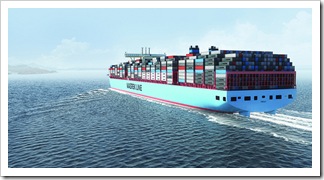
DENMARK's AP Moller-Maersk Group has posted its first quarter results, which its container shipping unit Maersk Line suffered US$599 million year-on-year loss despite a 18 per cent growth in volumes.
The carrier said the average freight rate fell nine per cent compared to the same period last year.
Overall, the group delivered a profit of $1.2 billion, drawn on revenues of $14.32 billion, down one per cent year on year. Compared to the same quarter of 2011, it experienced almost zero growth in the first quarter. Excluding divestment gains and one-off tax income from the settlement of an Algerian tax dispute, the group recorded zero profit in the first three months, against a profit of $1.1 billion in the same period of 2011.
Group CEO Nils Andersen said the company is "not satisfied" with its first quarter performance, adding "earnings in shipping were weak due to the continued loss-making rates in the container and tanker markets. However, our efforts to increase container rates are paying off and we will continue our initiatives to improve rates throughout the year.
"We will also maintain a high level of costs for oil exploration and development of discoveries for production. We are confident that these investments will enable us to stop the decline in our oil production and then return to growth towards our target of 400,000 barrels per day."
Looking ahead, Maersk expects the group's year-end 2012 earnings will be slightly lower than the $3.4 billion recorded in 2011. Cash flow used for capital expenditure is expected to remain the same as in 2011.
For container shipping, Maersk Line said it "expects a negative up to neutral result in 2012, based on the assumption that the rate restoration that has taken place since March 2012 will continue."
The Maersk Line projects the global demand for seaborne containers will increase by four to six per cent in 2012, with lower increases on the Asia-Europe trades, but higher increases on the north-south trades.
picture: google.com






0 comments:
Post a Comment